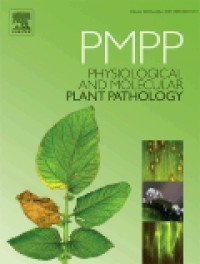Physiological and Molecular Plant Pathology Q1 Unclaimed
Physiological and Molecular Plant Pathology is a journal indexed in SJR in Plant Science and Genetics with an H index of 92. Journal with a Single blind Peer Review review system, and It has a price of 2480 €. It has an SJR impact factor of 0,726 and it has a best quartile of Q1. It is published in English. It has an SJR impact factor of 0,726.
Type: Journal
Type of Copyright:
Languages: English
Open Access Policy:
Type of publications:
Publication frecuency: -


2480 €
Inmediate OANPD
Embargoed OA0 €
Non OAMetrics
0,726
SJR Impact factor92
H Index239
Total Docs (Last Year)448
Total Docs (3 years)16014
Total Refs1734
Total Cites (3 years)446
Citable Docs (3 years)4.11
Cites/Doc (2 years)67.0
Ref/DocOther journals with similar parameters
Annual Review of Plant Biology Q1
Fungal Diversity Q1
Molecular Plant Q1
Nature Plants Q1
Annual Review of Phytopathology Q1
Compare this journals
Aims and Scope
Best articles by citations
Immunocytochemical localization of fusarium toxins in infected wheat spikes by Fusarium culmorum
View moreDifferential expression of rice Nramp genes in response to pathogen infection, defense signal molecules and metal ions
View moreOligo-carrageenans induce a long-term and broad-range protection against pathogens in tobacco plants (var. Xanthi)
View moreAbscisic acid and low temperatures suppress the whole plant-specific resistance reaction of rice plants to the infection of Magnaporthe grisea
View moreStudies on the phloroglucinol-HCl reactive material produced by squash fruit elicited with pectinase: Isolation using hydrolytic enzymes and release of p -coumaryl aldehyde by water reflux
View moreMolecular characterization of the avrXa7 locus from Xanthomonas oryzae pv. oryzae field isolates
View moreModulation of cAMP and phosphodiesterase activity by flavonoids which induce spore germination of Nectria haematococca MP VI (Fusarium solani)
View moreIn vivo growth and pathotoxin production by the maize pathogen Cochliobolus carbonum
View moreBiophysical characteristics of peach trees infected with phony peach disease
View morePutative pathogenesis-related genes within Solanum nigrum L. var. americanum genome: isolation of two genes coding for PR5-like proteins, phylogenetic and sequence analysis
View moreRedox- and bio-activity of apocynin (acetovanillone) in tobacco, a plant phenolic that alleviates symptoms of autoimmune diseases in animals
View moreTranscriptional profiling of Medicago truncatula roots after infection with Aphanomyces euteiches (oomycota) identifies novel genes upregulated during this pathogenic interaction
View moreInteractions between agarose-embedded plant protoplasts and germ tubes of Phytophthora
View moreOviposition inhibitory activity of the Mexican sunflower Tithonia diversifolia (Asteraceae) polar extracts against the two-spotted spider mite Tetranychus urticae (Tetranychidae)
View moreIn this issue: more secondary metabolites - phenolics
View moreProduction of a host-specific toxin by germinating spores ofAlternaria brassicicola
View morePurification, quantification and gene expression of urate oxidases in rust-infected bean leaves
View moreIn this issue: secondary metabolites and plant defence
View moreThe effects of various treatments on induced lignification and the resistance of wheat to fungi
View moreTypes of resistance of grapevine varieties to isolates of Agrobacterium tumefaciens biotype 3
View moreEnzyme activities in soft rot pathogenesis of potato tubers: Effects of calcium, pH, and degree of pectin esterification on the activities of polygalacturonase and pectate lyase
View moreIdentification and characterization ofapf1-in a non-pathogenic mutant of the rice blast fungusMagnaporthe griseawhich is unable to differentiate appressoria
View moreDeletion ofHCf-1, a hydrophobin gene ofCladosporium fulvum, does not affect pathogenicity on tomato
View moreMolecular cloning and characterization of a rice phosphoinositide-specific phospholipase C gene, OsPI-PLC1, that is activated in systemic acquired resistance,
View more
Comments